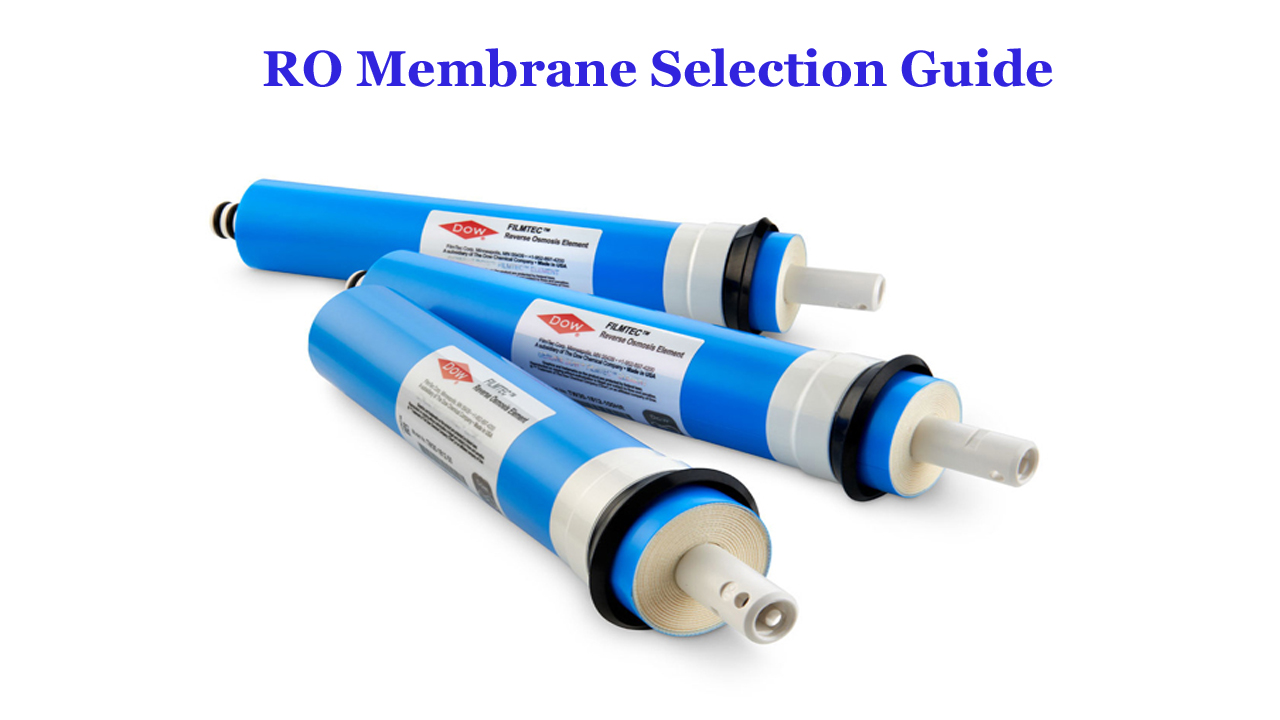Are you struggling with selecting the best RO membrane for yourself?
Have you selected the membrane but now realize it’s not the one you wanted for yourself?
These two are the most common problems that most people face when selecting a RO membrane all by themselves. Since it is one of the major components of modern-day electric purifiers, making a small mistake will lead you to jeopardy. The water dispensed won’t be potable, and sometimes, a wrong selection may impact the overall performance of the appliance.
This is why you need a good selection guide; with the help, you can understand the factors needed to be considered while choosing the RO membrane. The following article explains certain facts that you should know before buying the product for your water purifier.
Understanding the Working of RO Membrane
The RO membrane works against the principle of regular osmosis. In the actual process, water moves from low solute concentration to high solute concentration through a semipermeable membrane. Since it is a natural process, no external driving force is required.
However, in the purifiers, just the opposite happens. Here, the water molecules move from high solute concentration to low. When the water is not purified, it is rich in dissolved solute concentration, and that’s how the water is purified. Since the flow of water is against the natural osmotic pressure, an external pressure needs to be applied to force-feed the inlet water into the system for purification.
Things to see Before Selecting RO Membrane
1. Pressure maintenance in the RO filter
To ensure that the water flows from high solute (impure water) concentration to low solute (pure water) concentration, an external pressure needs to be applied. The electric system maintains this pressure, and the value needed is between 150 psi and 800 psi. Therefore, when choosing the membrane, you must ensure that the product will be capable enough to handle such high pressure.
If not, the filter will get damaged automatically, and the entire system will become useless. As a result, your investment will go down the drain and therefore, you should check whether the chosen membrane can withstand such a high pressure or not.
2. Stage-based and pass-based RO membrane
There are two classifications of the RO membranes based on how they operate. These are:
- Multi-stage RO system
- Multi-pass RO system
The rejected water from both filters is collected and fed into another RO system in the multi-stage RO systems. Here, concentrated water has a high level of contaminants, so it is further purified. Finally, in the third system, the water is purified and added to the permeate supply of water subjected to the next level of purification.
On the other hand, in the multi-pass system, the water is subjected to multiple levels of the RO membranes having varied pore size, wall thickness, and more. This ensures that different contaminants are eliminated from the supply of water effectively so that the dispensed outcome is free of any impurity.
3. The pH handling capacity of the RO membrane
One of the major functionalities of the RO membrane is to alter the pH level of the inlet water and set it at the appropriate level that our body can accept. However, the incoming water has different pH levels depending on the source, the water treatment plant near to your house, and so on.
Therefore, you need to check whether the chosen RO membrane can tolerate the pH level of your incoming water supply or not. Usually, the aromatic polyamide membranes can endure a pH of 2 to 11, while the cellulose acetate membranes can withstand only 2.5 to 7. This is why you have to be very careful while choosing the product because if the pH is not within the recommended limit, it will damage the membrane over time.
4. Toleration level to the inlet water temperature
Another factor that you need to be aware of is the temperature tolerance of the RO membrane that you have selected. For example, some membranes can withstand a temperature of 115-degrees Fahrenheit maximum while some can withstand only 85-degrees Fahrenheit maximum.
But suppose the supply water at your home has a higher temperature than the recommended amount. In that case, the heat will damage the membrane and render it useless. This is why you have to be sure that your chosen product can withstand the water temperature without sacrificing its performance and efficiency.
Impacts of choosing the wrong RO membrane
Many people think that the choice of the RO membrane won’t have an impact on the purification efficiency and speed just because they are meant to serve one purpose- allow the water to pass through. However, that’s not the truth because a wrong membrane will affect the overall performance. Here are some of the consequences you might have to face if your choice is not correct.
- It will reduce the water flow if the pores of the RO membrane are too small in size. It should have micron size but is similar to the water molecules.
- Reverse Osmosis won’t occur properly if the membrane fails to withstand high pressure from the inlet of the purifier. As a result, purification speed will be reduced further.
- Sometimes, the materials with which the membrane is made might be cheap. Therefore, they won’t be able to last for a long time.
- If there is no drainage system, the impurities will start to accumulate outside the RO membrane, further reducing the product’s performance.
Conclusion
Now that we have discussed everything you probably need to know about the RO membrane selection guide, we are certain that you won’t face too many problems. Of course, you might not get the exact match in the market like the original membrane. But you can at least try and stick to a product with close resemblances with the initial RO membrane manufactured by the company itself.

